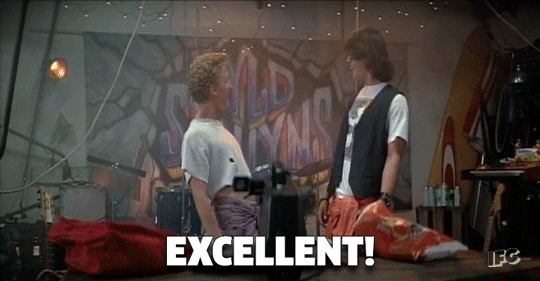
Articles
How to Craft the Best Knowledge Transfer Plan
November 1, 2022

Think of your employees as the ground forces that keep your operations afloat. While most people think management is the go-to for answering questions about your business, in many ways, employees have a more rounded understanding of the day-to-day operations.
But, getting all employees to hit the ground running may take a small investment of your time and energy, usually in the form of establishing a solid plan for transferring knowledge.
Knowledge transfer makes all of your business’ need-to-knows easily accessible so that your employees can focus on being rockstars without getting bogged down by unwieldy step-by-step processes and long email chains that answer simple questions.
So, what is a knowledge transfer plan, and how can you create the best one for your business?

What is knowledge transfer?
Knowledge transfer is the way your business distributes important information to everyone. It’s more than training; it’s a coordinated effort to harness experience-based information for later use.
In theory, it’s something that can be infused into your company culture. In practice, it’s how you improve your systems company-wide. The knowledge of one can benefit the whole organization, and there’s a lot of value in gathering knowledge before it slips through the cracks.
What is a knowledge transfer plan?
So, knowledge transfer is awesome, and we should all practice it.
Now what?
Transferring knowledge in the most effective way starts with a knowledge transfer plan. A knowledge transfer plan is your formal system for collecting and distributing knowledge to employees.
And honestly? It’s all about documentation.
When you have a concrete plan to collect knowledge from employees, there’s less risk of losing valuable company knowledge when an experienced employee moves on from your company. Turnover is the biggest hurdle for keeping your knowledge within your company.
When someone has vital knowledge, that information should be stored in a place that’s accessible to all. That way, you can essentially pick everyone’s brain whether they’re in the office or not.
Everyone should know where to look to find this information, and it should be consistently recorded and updated, so no wires get crossed.
When it comes to innovation and problem-solving, your knowledge transfer plan is the answer. It’s also the best way to update your business playbook. While knowledge transfer isn’t training, a structure for knowledge transfer streamlines onboarding and reduces turnover.
Is this really necessary? I don’t have high turnover rates.
No one is immune to a changing workforce. Just because you don’t have high turnover doesn’t mean you shouldn’t aid your employees as much as possible. Keeping your employees informed keeps them satisfied.
Also, you’re going to need to change your business at some point. Your standard operating procedures (SOPs) are constantly changing based on your business’s needs, and you’ll likely need to shift strategies for a new market at some point.
With a knowledge transfer plan in place, you can hold fast to what works and pivot your strategies for what doesn’t.
A knowledge transfer plan keeps your information consistent even when your workforce isn’t. Every plan you try to implement is boosted by having knowledge in a singular place, evolving right along with your company.
Your team should always be learning.
While we’re talking about keeping your employees happy, we should mention that there are a lot of benefits to knowledge transfer — especially when it comes to employee learning.
There’s an interesting conflict that many businesses face. In a report conducted by LinkedIn in 2018, 94% of employees said they’d stay at a company longer if it invested in their career development. Yet, finding time for learning was the biggest challenge for talent development.
If you’re a business leader, you understand the benefits of learning. Giving your employees opportunities to grow is a great way to keep them engaged and motivated in your business' efforts for longer. Finding the time for learning initiatives is hard, but you can meet your employees where they are by having a knowledge transfer plan in place.
Talent developers need to embrace the trend of “just-in-time learning” to better support the modern employee. This approach is best because it’s hard for employees to retain information along with their job duties.
With a solid knowledge transfer plan in place, you can give employees the knowledge they need to succeed.
I’m ready to make a knowledge transfer plan.

Forming a knowledge transfer plan takes time, but it’s not difficult to implement. You just need to carefully plan the information you want to document, who you’ll gather that information from, and how you’ll keep that information easily accessible to all.
A well-crafted knowledge transfer plan is an easy-to-implement knowledge transfer plan, so take the time to do it properly.
Start with what you need to know.
First off, you need to figure out which aspects of the business your employees most need access to. This starts by identifying needs.
Ask yourself: What are the main risks that your business faces? This is the “why” of your knowledge transfer plan. Maybe a seasoned manager is leaving, or you’re shifting around departments. Both may result in a lot of knowledge loss. This will give you some deadlines to work within.
What are the areas of knowledge that are most important for your company? Also, what areas of knowledge are most challenging for new employees to learn? In the case of disaster, where should employees go and which department should they contact?
Look through your SOPs, strategies, and best practices. Prioritize gathering the information that’s useful to the business as a whole before you start going department by department and team by team. You may want to create a knowledge map to help identify areas that need improvement.
When you start with what your employees need to know, you’re providing yourself with a top-down framework to build off of.
Get your experts together.
Once you have a good understanding of the most important knowledge for your business and what areas need the most improvement, you can start having your experts weigh in. Collaborate with department heads, SOP experts, and seasoned team members to have them share their best practices and insights.

Creating a picture of what they know can lead to a more robust process. These individuals are the most experienced and involved in your business, and they’ll be able to offer the most extensive knowledge in the company.
Have brainstorming sessions and collaborative discussions to pull together the information that you need. Look for all different types of knowledge:
- Explicit: Information that’s easy to document.
- Implicit: How explicit knowledge is turned into action.
- Tacit: Knowledge that’s gained through experience.
Transient knowledge that is no longer best practice should also be identified so that it can be removed from your current SOPs. Collaborate with your planning team to identify what’s no longer relevant and what can be salvaged.
Put together an action plan.
You’ve nailed down the most important information in your company, and you have a team involved in planning — now it’s time to put your plan into action! A meaningful introduction to your knowledge transfer plan for your employees is the best step toward its success.
How are you going to distribute the knowledge transfer plan to everyone?
Try using a singular knowledge base that makes it easy to continuously update and share your company’s knowledge. You can house all of your most important information here, including your knowledge transfer plan, company wiki, and org or role chart.
Make sure you have team leaders involved in implementing your knowledge transfer plan. Have them instruct their team on the practical side of knowledge transfer to create mentorship opportunities and spaces to ask experts questions. Keep communication open across departments, too. This helps eliminate silos that trap knowledge in one spot.
To track the success of your knowledge transfer plan, make sure you coordinate KPIs and benchmarks with your planning team. This’ll allow you to track progress on learning and adjust your approach as needed.
Make knowledge transfer a part of your company culture
Crafting your knowledge transfer plan is an awesome step toward creating a resilient, engaged, and growth-oriented team.
But it won’t go anywhere if knowledge transfer isn’t ingrained with your company culture. Implementing a new system for knowledge transfer may involve adapting your business playbook and setting dedicated time aside for keeping practices and information current.
With so many changes, you’ll need to conduct training and learning initiatives frequently. Don’t have the time? That’s okay! Take advantage of a knowledge management system, like Trainual, to keep everyone on the same page. That way, everyone can keep learning and sharing at their own pace.
Similar Blog Posts










